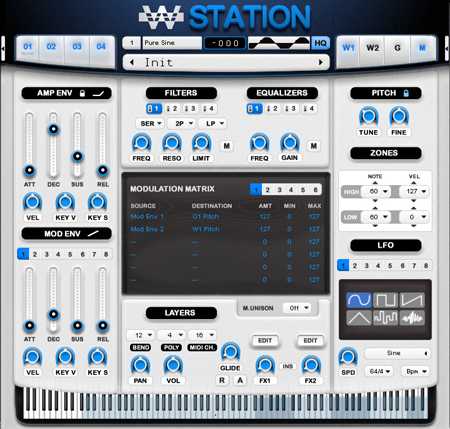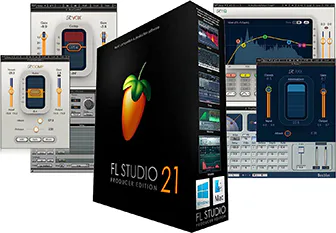Acoustic Modelling WusikPACKS 1-6-ASSiGN
Team ASSiGN | 21 MAY 2010 | 1.39 GB
This group of SoundSets and Presets includes sounds I produced recently in working on physical simulation of instruments, as well as some from recording of an acoustic guitar — feeding the simulation results or recording through guitar amp simulations, for most of them — then through acoustic modelling software for all of them. The instruments typically consist of four velocity layers, every other note over the range. The Presets are simply places suggested for starting points for further exploration. I simply manipulated the ADSR envelopes of two oscillators described below to provide more and less of the acoustic modelling sound (“ambient” loosely speaking). I also provided some single-velocity layer presets for lighter CPU and memory loading.
Some technical notes and hints for use — especially IMPORTANT NOTE below:The acoustic modelling used for these sounds simulates Blumlein-style, truly coincident microphone recordings at a distance of 9 meters, 90 degree separation between right and left with slight upward tilt. The instruments were set up such that the lower notes were at a position 15 degrees to the left, middle notes at center, and higher notes 15 degrees to the right. This is not merely panning, but actual simulation of positioning in a (virtual) concert hall of 12,500 cubic meters, as if the instrument was spread out in the space of this virtual hall. Please see an IMPORTANT NOTE on panning further down….
Each individual sound was cross-faded into two oscillators, Osc1 and Osc2. Osc1 contains the direct wave and a few very early reflections (i.e. “dry” but with a particular timing interval to model a specific location for sound source and listener) while Osc2 contains the rest of the early reflections, later reflections, and the reverb tail.
A VERY IMPORTANT NOTE FOR USERS: Panning should be done with oscillators, not by panning instruments or instrument tracks in a mixer. Because of the acoustic modelling, users should NOT pan the instrument track because this will disturb the later reflections and reverb tail (Osc2), throwing it to one side or the other. Users should normally pan ONLY Osc1 inside WusikStation instead which will pan the direct wave and early reflections.
As described above, and in general, each instrument was modelled so that the portion of the instrument that produces lower notes is on the left, and the portion of the instrument that produces higher notes is on the right. Therefore, even if panning is done for Osc1, notes will tend to jump around a bit. This was done on purpose to create an additional dynamic to the sound.
Results from mixing may need mastering, in particular multiband compression and some bass lift. The basses are a little light on sub-bass to make them more compatible with what folks do anyway when mixing. That is, most people cut sub-bass down anyway, an advisable thing to do for many mixes. When I want more “pop” sound from these basses and a bigger thump from the kick, I increase the bass starting at about 180 Hz on down by about 2 db or so. I’ve found that the “basses” actually provide decent midrange guitars.
These sounds can be quite demanding upon computer resources. Thanks to William having implemented SFZ capabilities, it is quite easy for users to reformulate these sounds as two-layer, every fourth note instruments, etc.
—————————
And finally, probably way more than you wanted to know:
Some of the guitar sounds were made by solving the wave equation for a plucked string with different types of plucking, simulating “faster” to “slower.” These solutions were then resonated in various types of boxes. That is, they were convolution-reverb’d in small boxes at specific points on and within the small box. Some of the boxes were real boxes, others were simulated. In turn, these resonant solutions were fed into guitar amp sims. The outputs of the guitar amp sims were then supplied to the acoustic modelling represented by stereo pairs of impulse response functions, each pair representing the recording of an impulse by two truly coincident directional microphone at a particular location, of a sound source at another particular location. That is the short explanation.
Motivation for this project: The acoustic modelling software provides stereo separation, echo, reverb, etc. in a physically consistent way, as contrasted to the usual combination of digital-signal-processing models which are not necessarily consistent with each other and can cause a lot of headaches during mixing. One goal of this project was to create a set of sounds that were more “ready to mix,” requiring mostly setting MIDI velocity ranges, volume levels and some slight panning as explained above. If one wanted to use additional effects for the sounds, in most cases it should be done back before the acoustic modelling, then remodelled with the result being a new instrument. But artistic license applies as always. I mention all this to explain the philosophy, so to speak, behind this effort.
Acoustic.Modelling.Pack.1.WusikPACK-ASSiGN
4725 Views
Acoustic.Modelling.Pack.2.WusikPACK-ASSiGN
Acoustic.Modelling.Pack.3.WusikPACK-ASSiGN
Acoustic.Modelling.Pack.4.WusikPACK-ASSiGN
Acoustic.Modelling.Pack.5.WusikPACK-ASSiGN
Acoustic.Modelling.Pack.6.WusikPACK-ASSiGN
https://beelink.pro/21713/Acoustic-Modelling-WusikPACKS-1-6-ASSiGN.html
Categories:
Submit a Comment or Report Broken Links:




